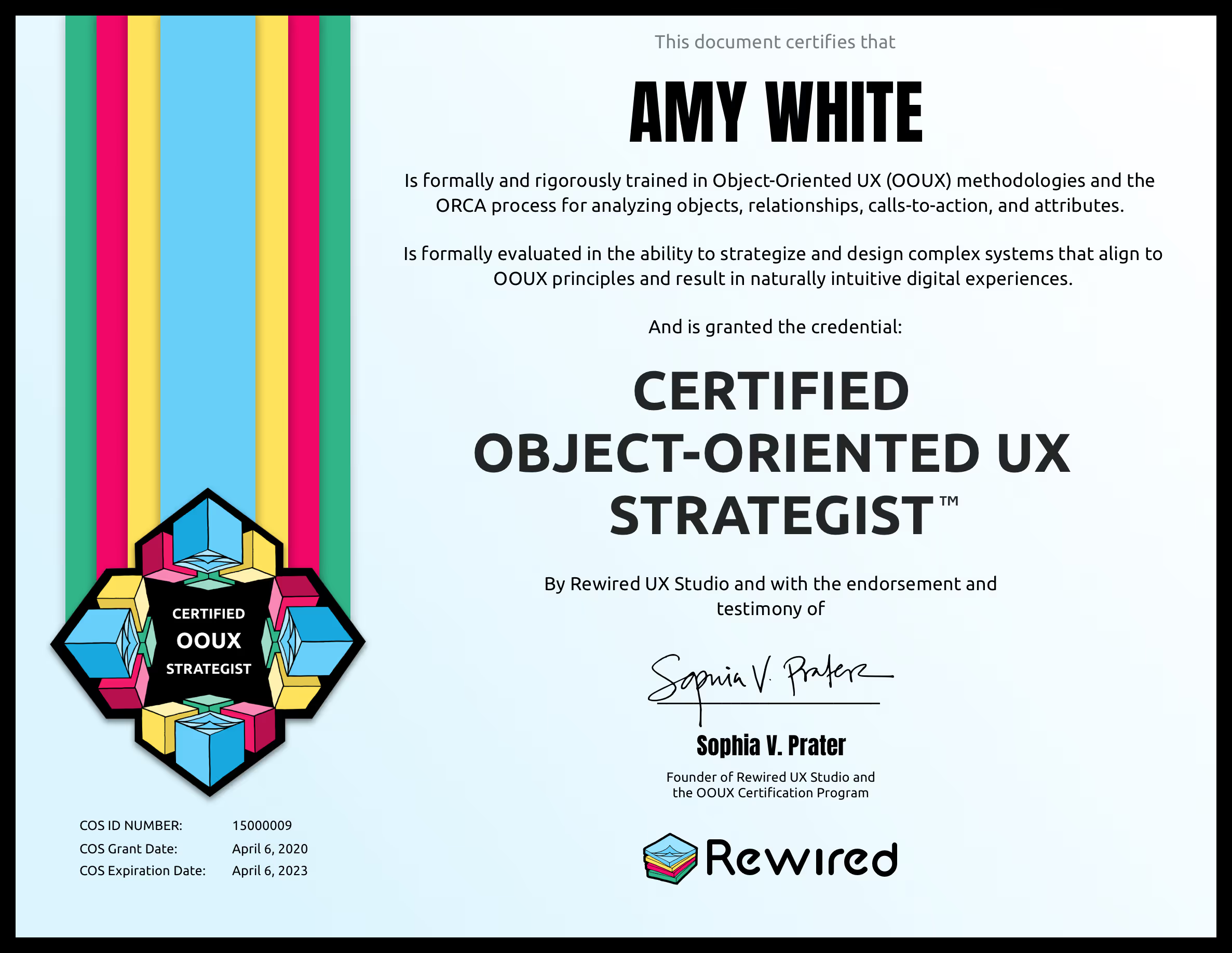Cookie Consent
By clicking “Accept”, you agree to the storing of cookies on your device to enhance site navigation, analyze site usage, and assist in our marketing efforts. View our Privacy Policy for more information.


UX Writing, Education, Government




As a former small business owner turned UX designer, I was looking for a strategy to get a solid start on each new project. I wanted a framework for understanding the whole system, how all the parts relate, and how it might grow, so I could feel confident I wasn't missing key functionality.
OOUX helps you think through what you need to design before jumping into user flows and screens. By asking "What objects are important here?" and "What can users do with them?" you can build extremely robust contextual navigation. The process is a powerful tool to get stakeholders on the same page and clarify tricky questions up front. Using recognizable and reusable objects across a site or app greatly simplifies the final designs and reduces cognitive load for users. I love OOUX because it's a systematic way to work with stakeholders and create a truly intuitive user experience.

If you want to take a deep dive into the OOUX process, Amy White will show us how to use the ORCA method to think through privacy and permissions across an entire application - before designing any screens.
FYI: This is an affiliate link (we earn a small kickback if you buy).


Work through the OOUX Masterclass with a cohort of other professionals. 1-on-1 coaching, personalized assignment reviews, office hours, and small-group study sessions. Finish with a valuable professional certification.
Learn more